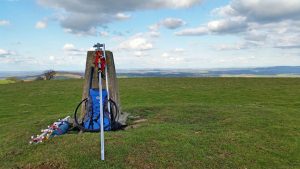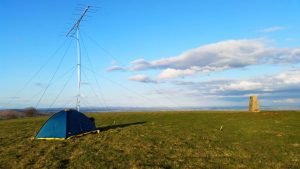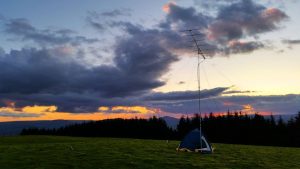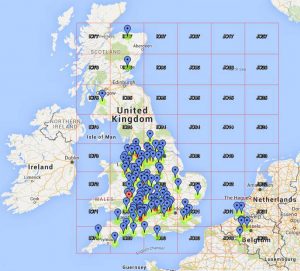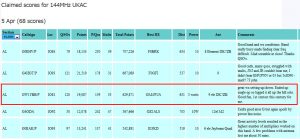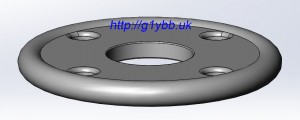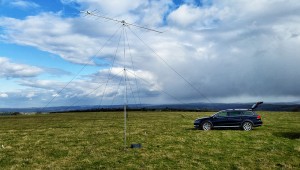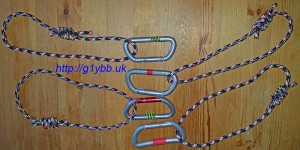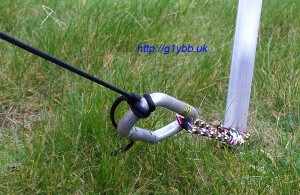This was the series of contests I have been building the lightweight and portable antenna system for. I knew exactly where I wanted to operate from and the new (to me) super lightweight Yaesu FT-817 radio and the modern Lithium batteries have made it a possibility for me. Most of my previous contesting in the 80s and 90s was done in the Black Mountains below Pen-Y-Gadair. It is a great site for the non multiplier contests but because we were below the summit we always lost out on multiplier events. I always wanted to operate from the summit but with our equipment then it was a no go for us with no 4WD and even a landrover would struggle to get there.
But I can walk there! Well I can with Paul G1YFC to help carry the gear.
Here I am loaded up:
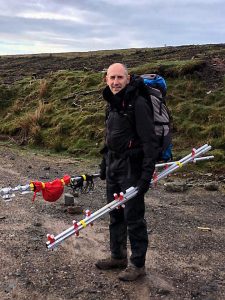
And Paul with his load too:
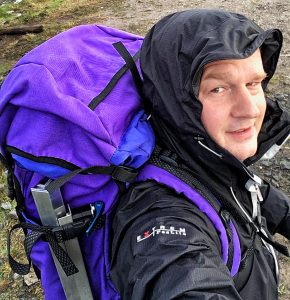
Nearly at the summit:
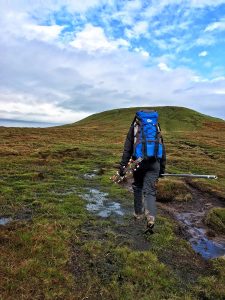
The weather today was practically perfect for contesting on top of the exposed summit, unlike the day before when the winds would probably have made it impossible to get my lightweight mast up safely. We managed to get the antenna set up before a light shower and soon had my mountaineering tent up too. We set up away from the summit cairn to be out of the way of walkers but also to be above the steeply falling East facing side of the mountain to make the best use of the ground gain:
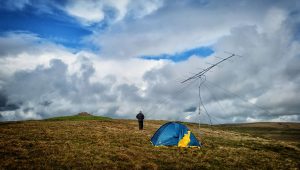
Paul took an arty one of my direction label and the end of the coax:
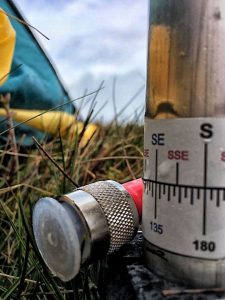
Once the radio was connected up we scanned the SSB section of the band to see who was about and to find a free frequency. There were some strong fairly local (as crow flies) stations below 144.300MHz so we went higher to be clear of them. I noticed I could hear one station CQing 50KHz away so decided a 100KHz away would be a good plan. Once it hit 11:00 we were off. About 90 minutes later Rob GW7LAS/P popped up and after our exchange informed us we’d kicked off an hour too early. Doh! Disaster. We worked some good multipliers and quantity of QSOs in that first hour, for no avail. There was nothing for it but to soldier on and make the best of a bad job.
Later on we had a sharp rainstorm and with it came S9+ of rain static. So strong the station that we could hear 50KHz off his frequency was only just readable above the noise. Luckily it died back down after a while. The last couple of hours were pretty hard work beaming north for some Scottish points proved fruitless as did beaming to Eire. We did beam down towards Guernsey hoping for some GU and maybe a French station that seems to be on often in the UKAC events and were pleased to pick up Guernsey and Alderney almost straight away.
We finished with 121 QSOs of which 79 were in the qualifying period. We lost 9 multipliers from 6 QSOs in that first hour alone! However we managed to salvage a reasonable claimed score of 783,300 points which put us just in 2nd place in our section. One more average QSO would have taken us to 1st!
Here is our QSO map, valid QSOs in green, invalid in red. We lost some good distance ones and multipliers too:
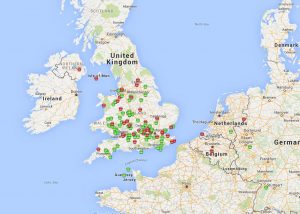
Our claimed score was encouraging though. Hopefully Rob GW7LAS/P made more logging mistakes than we did, one decent lost QSO more than us would mean we would swap places:

Results showed we couldn’t overtake Rob after all. So close yet we could have done so much better. BIG lesson learnt there!

Full result list (PDF)



